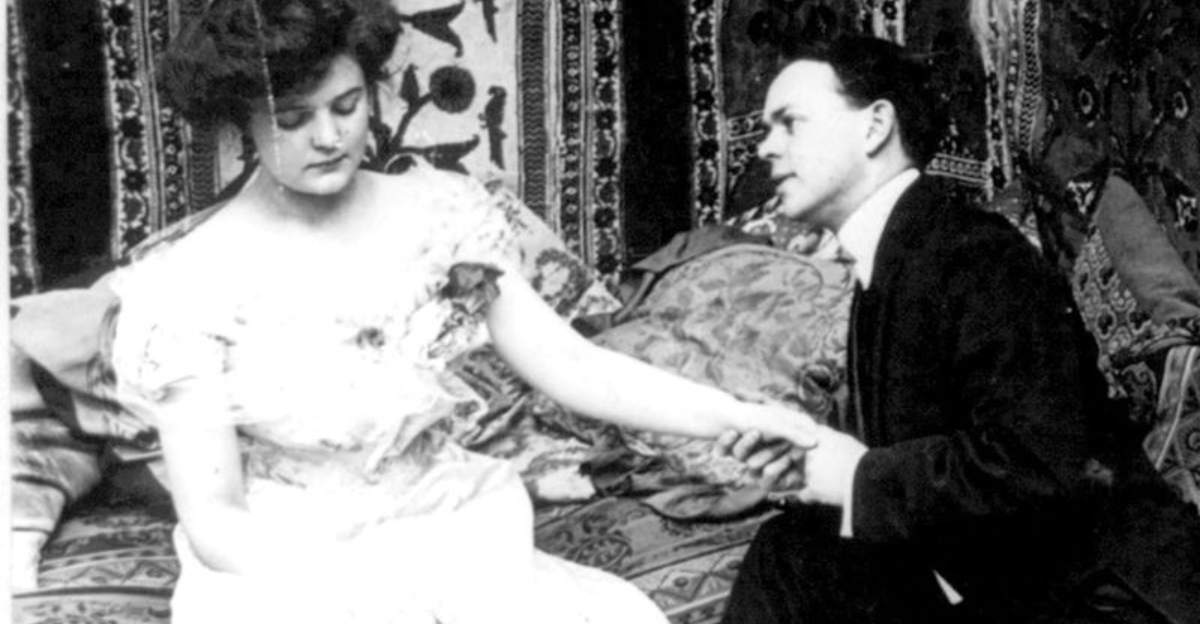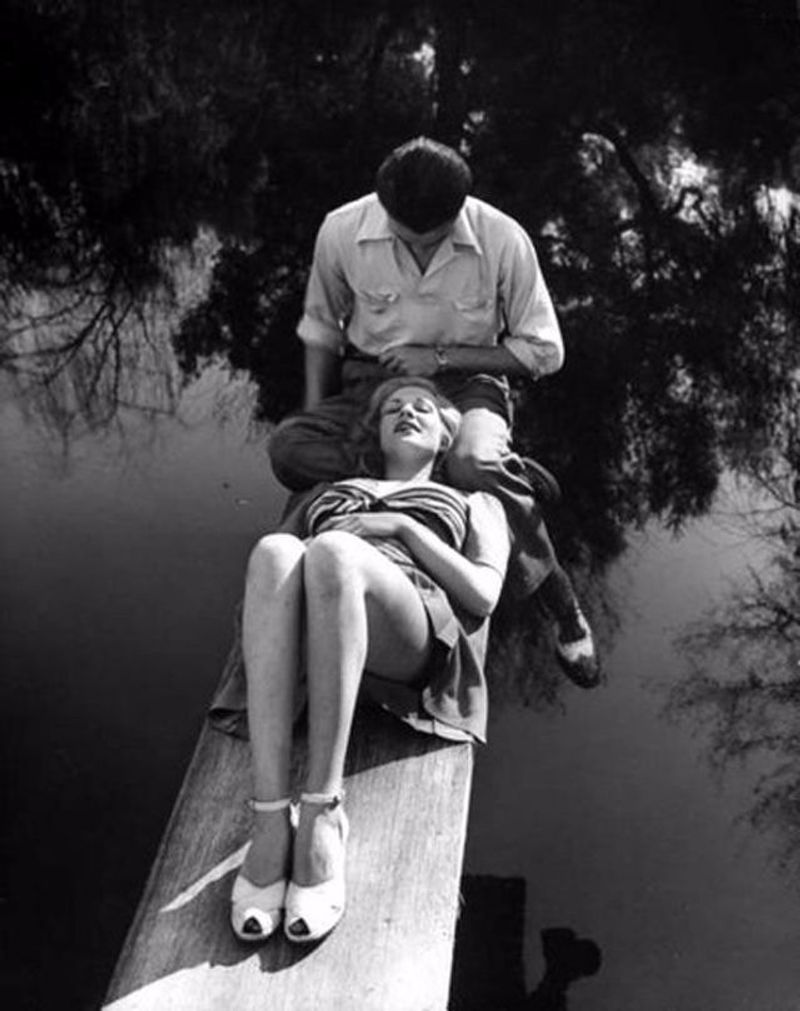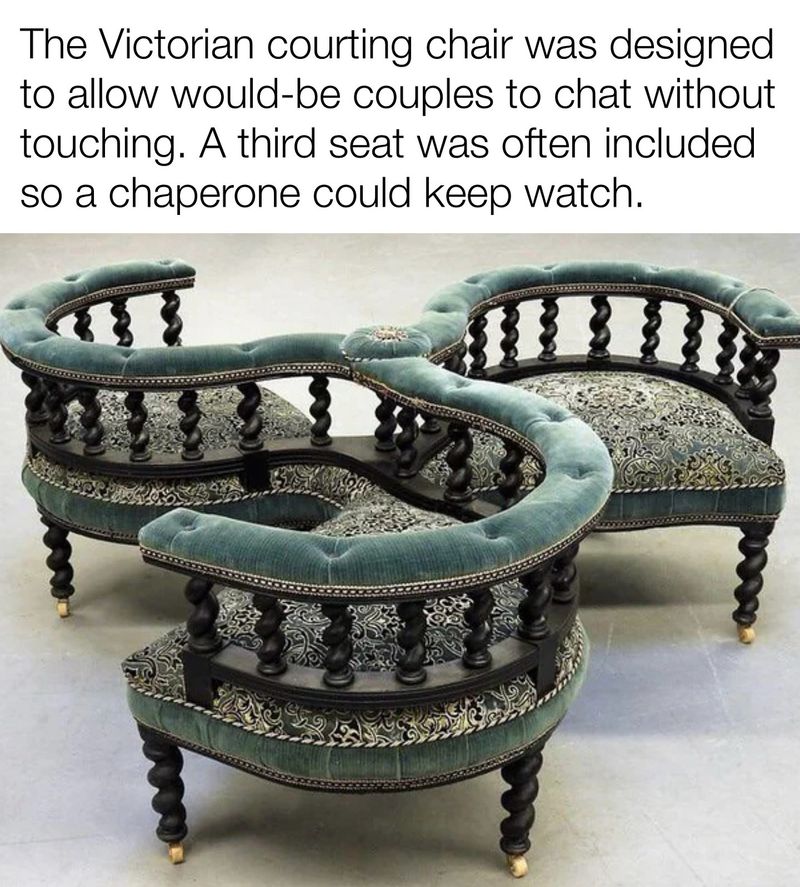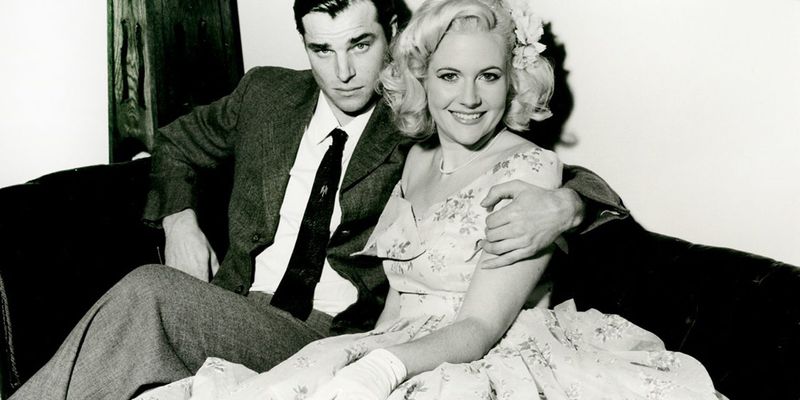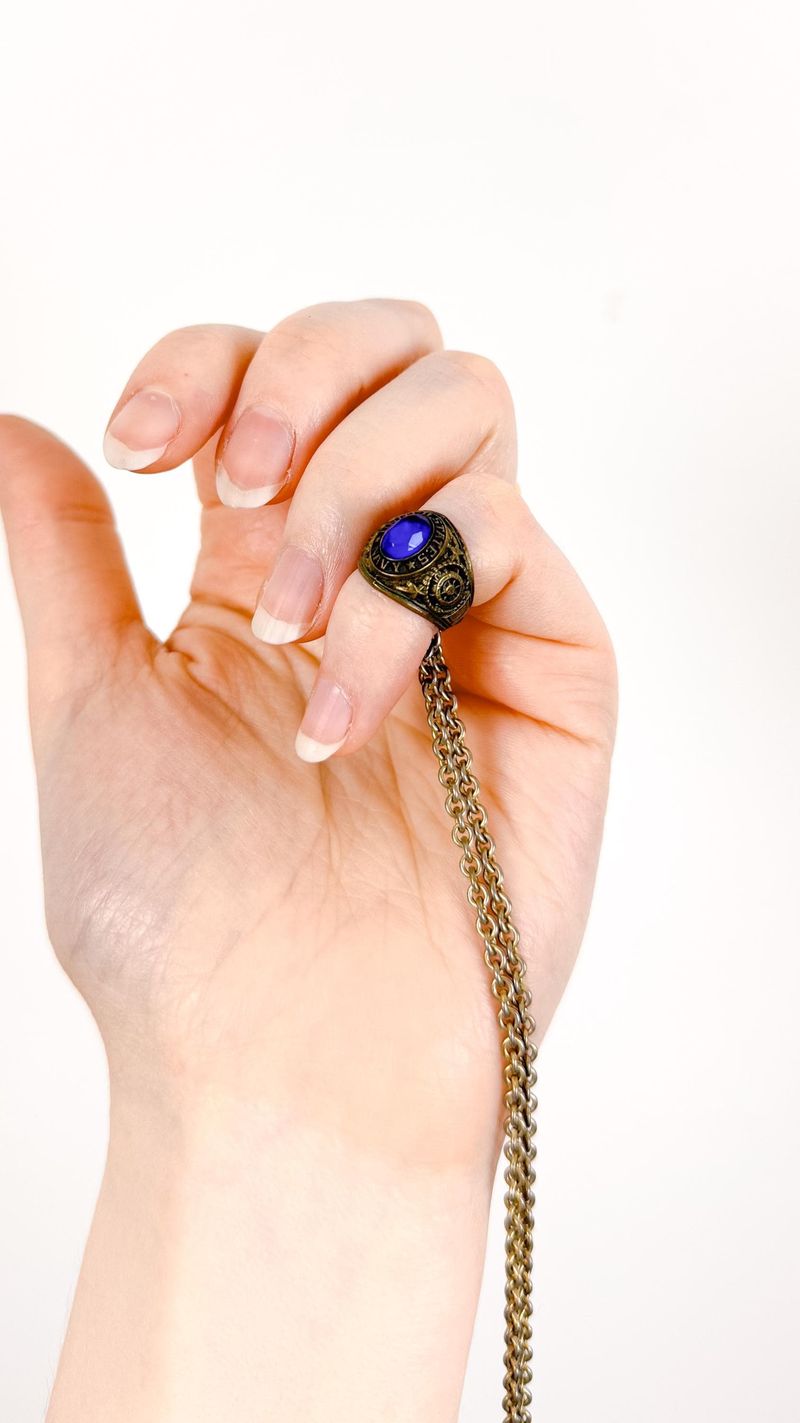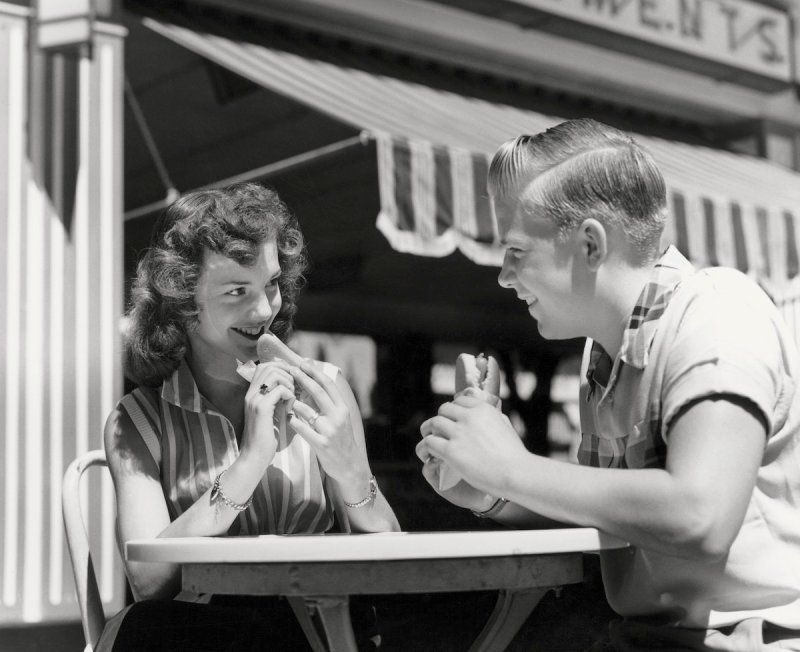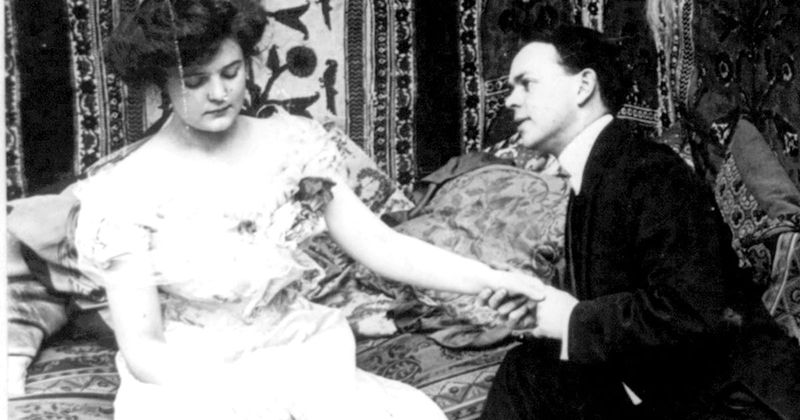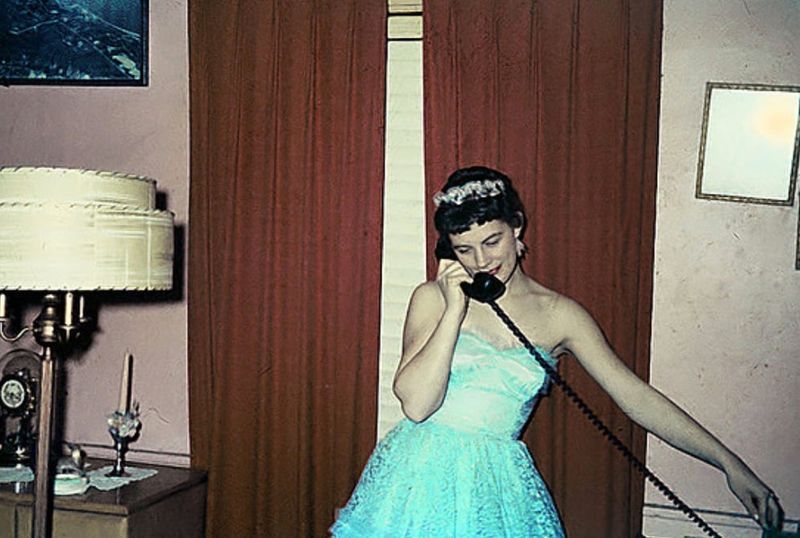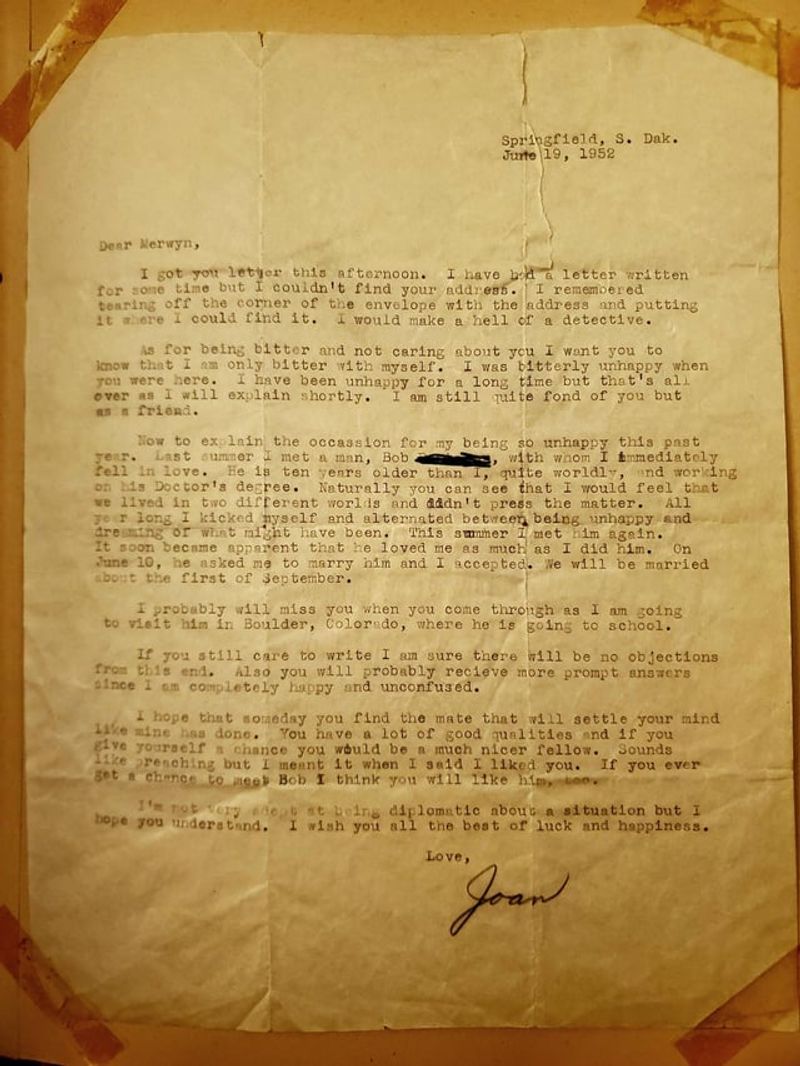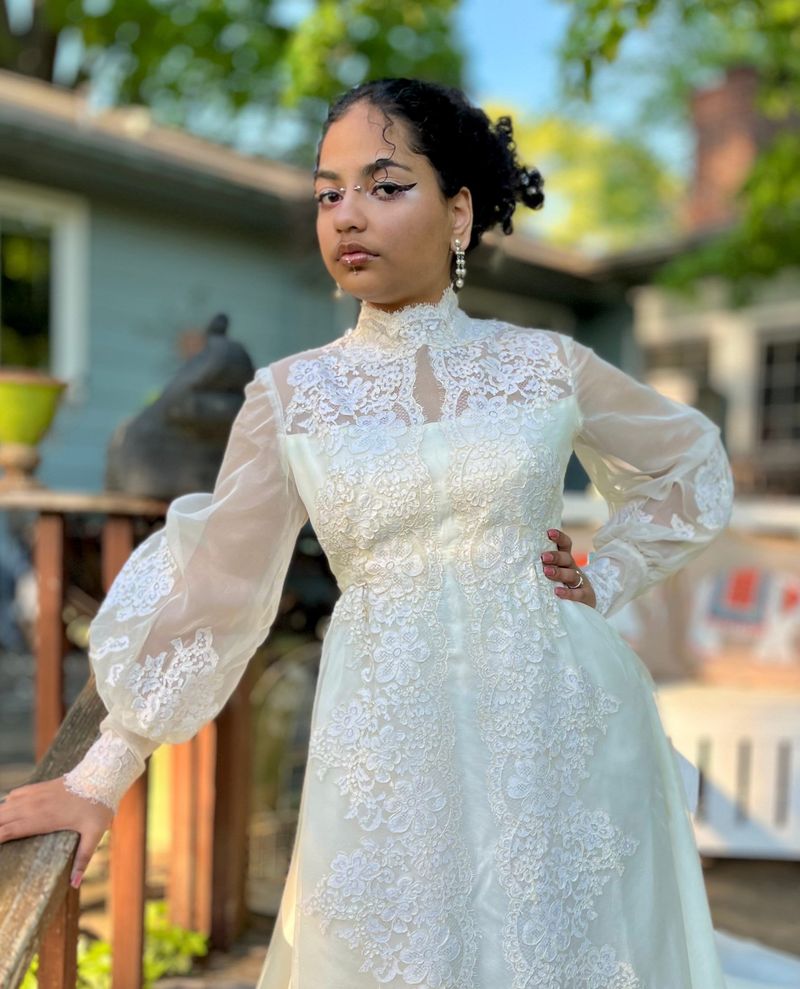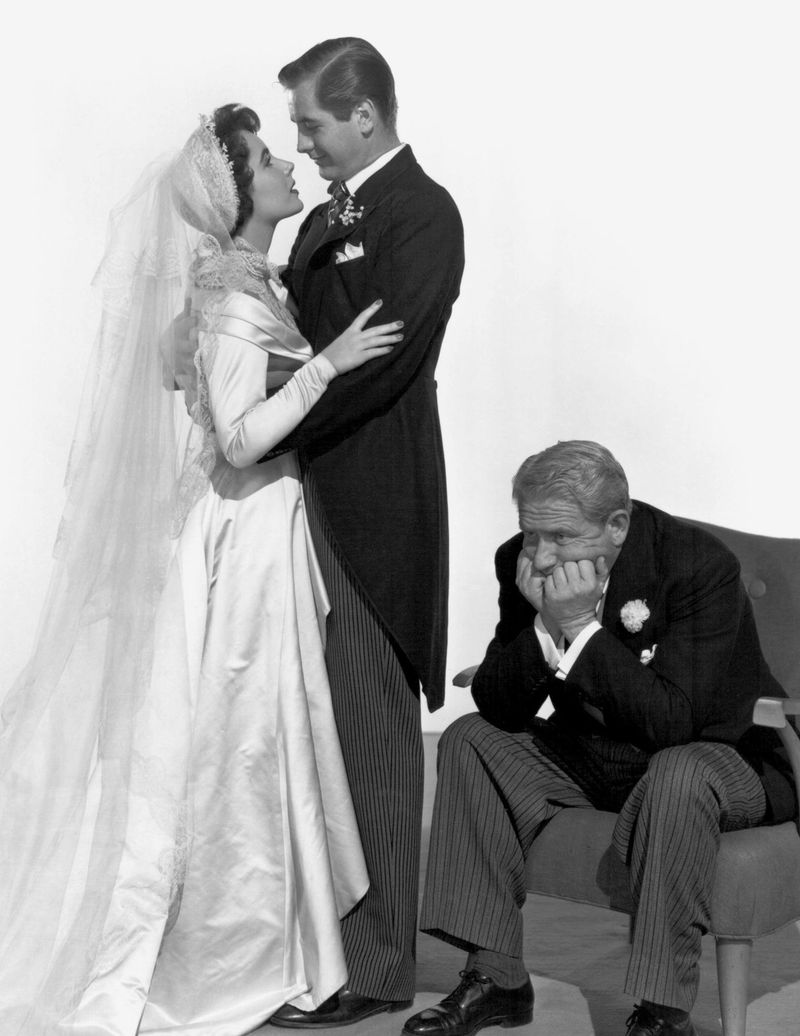Explore the intriguing world of historical dating norms that governed the romantic lives of past generations. These 12 retro dating rules will surprise modern singles with their strict and unusual guidelines.
1. No Kissing Until Engagement
In the 1800s to the 1950s, etiquette books staunchly advised women to refrain from kissing any man unless they were engaged. Even then, it was just a quick peck! Courting was a process shrouded in mystery and modesty, where physical affection was strictly limited. Modern singles might be astounded by this rule, considering physical chemistry a crucial aspect of relationships. Marriage without making out seems unimaginable today, but this was a norm in the past. The idea was to uphold purity and wait for the ultimate commitment.
2. Chaperones Were Mandatory
Until the early 1900s, couples were always accompanied by a chaperone. Whether it was a parent, sibling, or a hired escort, their watchful eyes ensured propriety. The presence of a third party on a date might seem peculiar now, but it was the social norm back then. Modern daters may find the idea uncomfortable, envisioning awkward silences and lack of privacy. This practice aimed to protect reputations and ensure that couples adhered to societal standards of behavior.
3. Women Couldn’t Ask Men Out
In a world where gender roles were strictly defined, a woman calling a man for a date was considered desperate. Until the 1960s, it was the man’s duty to make the first move. This rule reinforced the traditional belief that men should lead relationships while women played a passive role. Today’s singles might wonder what happened if both parties were too shy. The societal expectations left little room for flexibility, and women had to rely on subtle hints to show interest. The dynamic shift in dating norms highlights the progress made towards equality in relationships.
4. No Dating Before 16 (Or Even 18!)
Teenage romance was once restricted by strict age rules. In the 1950s, many high schools banned dating until junior or senior year. Some parents took it further, forbidding daughters from dating before 18. Such restrictions might seem harsh to those who experienced young love in middle school. Back then, parents and schools aimed to protect youths from premature romantic entanglements. They believed in safeguarding their children’s innocence and ensuring that education remained a priority. While today’s teenagers explore relationships freely, these rules reflect a more conservative approach to adolescent dating.
5. The ‘Going Steady’ Ring
The ‘going steady’ phenomenon in the 1950s and 60s was equivalent to a pre-engagement commitment. Couples exchanged rings to signify exclusivity, and breaking up meant returning the ring. This ritual was more than a teenage trend; it symbolized a significant step in a relationship’s progression. Modern readers might find this notion charming yet perplexing, given the drama it entailed. A ‘steady’ ring was a public declaration of devotion, setting clear relationship boundaries. Though today’s relationships may lack physical tokens, the quest for clear commitment remains timeless.
6. Men Paid for Everything—No Splitting the Bill
In the past, it was assumed that men would cover all dating expenses. This expectation reinforced gender roles where men were providers. A woman offering to pay was seen as an insult to his pride. Modern couples often split bills to promote financial equality, a stark contrast to historical norms. This practice reflected societal beliefs about gender and economic status. Today’s singles may find this rule antiquated, questioning its fairness. Yet, some might also find it charming in a nostalgic sense, a reminder of traditional courtship rituals where chivalry was paramount.
7. ‘Petting’ Was a Scandal
In a world wary of impropriety, even simple gestures could be scandalous. Physical contact beyond hand-holding was deemed ‘fast’ or ‘loose’ during the early 1900s. A kiss in public could tarnish a woman’s reputation. This strict limit on affection seems alien to today’s open expressions of love. Such constraints highlight how society once governed personal relationships tightly. The fear of ruinous gossip dictated behaviors, emphasizing modesty above all. Modern singles might be puzzled by this restraint, seeing it as an unnecessary rigidity in human interaction. Yet, it underscores the past’s focus on virtue.
8. Women Had Curfews (But Men Didn’t)
Curfews imposed strict limits on women’s freedom. During the 1950s, many women faced early night curfews, often as early as 10 PM. Men, on the other hand, enjoyed unrestricted liberty. This gender disparity in rules illuminated societal biases. Modern readers might see this as unfair, reflecting an era where women’s behavior was subject to scrutiny. Such rules aimed to protect women but also inhibited their independence. The notion of curfews might seem outdated, yet it speaks volumes about historical gender dynamics and the evolving journey toward equality.
9. You Needed a ‘Date Resume’
Dating in high society, especially from the 1920s to the 50s, required a ‘date resume.’ Women listed skills like cooking and dancing to attract suitors. This approach likened dating to job hunting, where personal attributes were advertised. Modern singles might find this practice amusing and overly formal. The idea of marketing oneself for romance showcases how courtship was intertwined with social status and expectations. These resumes reflected the era’s emphasis on skill and propriety. Though times have changed, personal branding in dating still echoes this bygone tradition’s sentiment.
10. Breaking Up Required a Letter
Ending a relationship once demanded a formal approach. Ghosting wasn’t an option, as proper etiquette required a handwritten breakup letter or a face-to-face conversation. In today’s fast-paced world, this degree of formality might seem excessive. However, it underscores the value placed on communication and closure in past relationships. Modern singles might appreciate the respect and thoughtfulness this practice entailed. While breaking up is never easy, this rule reflects a time when dignity and consideration were paramount. The contrast between then and now reveals shifts in relationship dynamics.
11. No White Dresses If You Weren’t a Virgin
Wedding traditions once dictated strict attire guidelines based on purity. Before the 1970s, only virgins could wear white wedding dresses. Others had to choose alternative colors like ivory or pink. This rule might shock modern couples who view wedding dress choices as personal preference. The white dress symbolized innocence and virtue, a reflection of societal values. Today, brides choose gowns freely, yet this tradition’s roots remain a fascinating glimpse into cultural history. The shift from mandatory symbolism to individual expression marks progress in personal freedom and acceptance.
12. You Had to Ask Dad for Permission
Proposing marriage once involved more than just a romantic gesture. Traditionally, a man had to seek the father’s permission before proposing. This practice ensured respect and approval within the family hierarchy. Modern singles might find this rule outdated or unnecessary, questioning its relevance in today’s autonomous decision-making. Yet, it reflects an era where family involvement was paramount. The shift towards individualism marks a departure from such customs. While some may still follow this tradition, the broad acceptance of personal choice signifies evolving norms.
